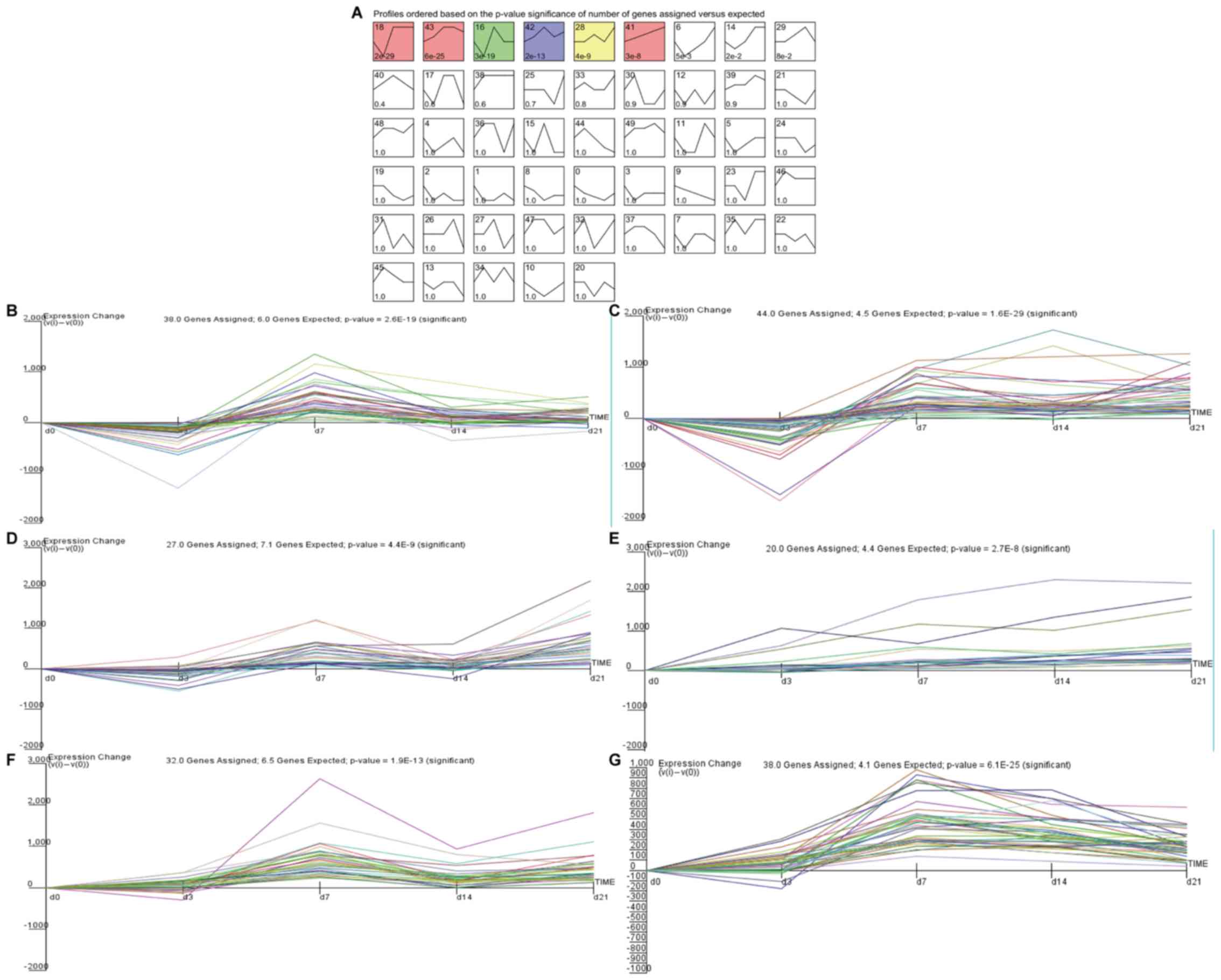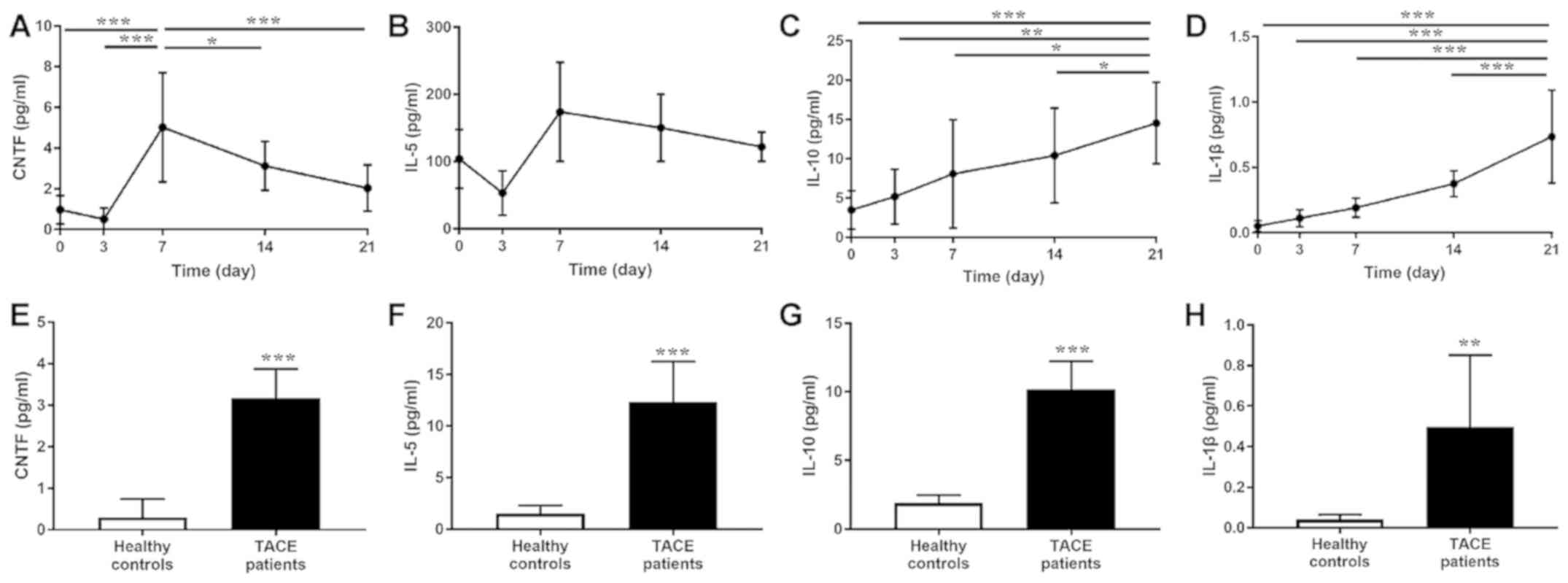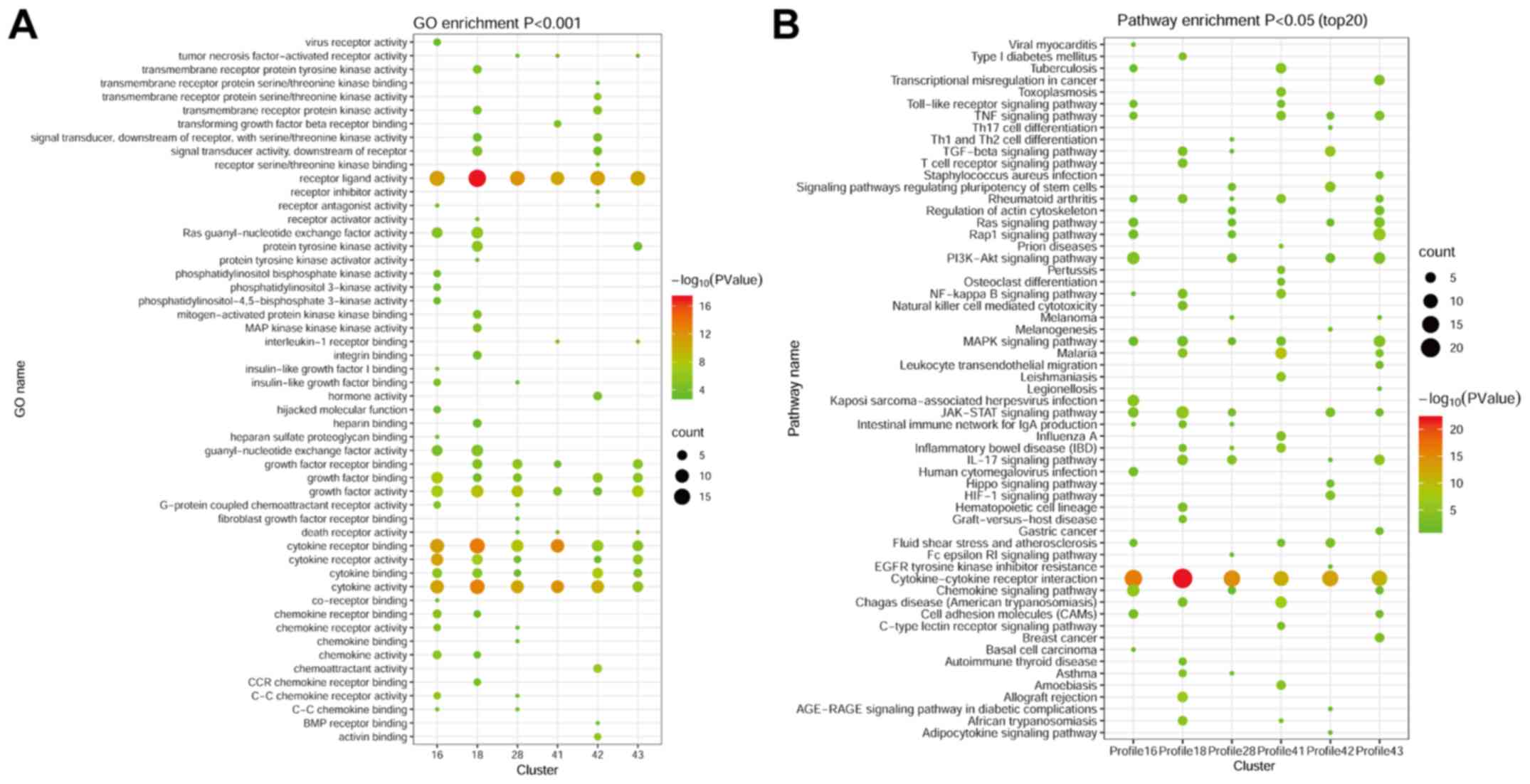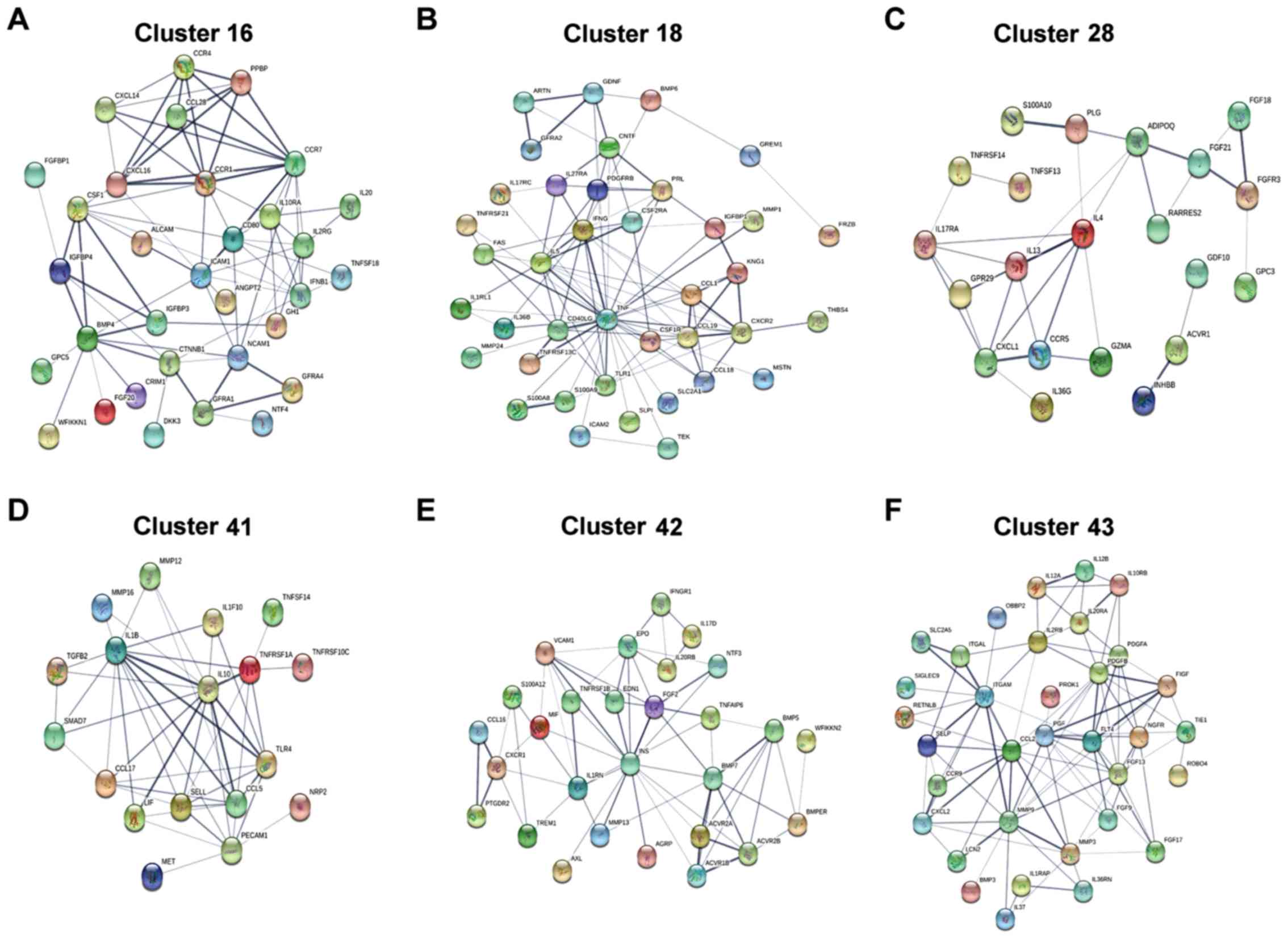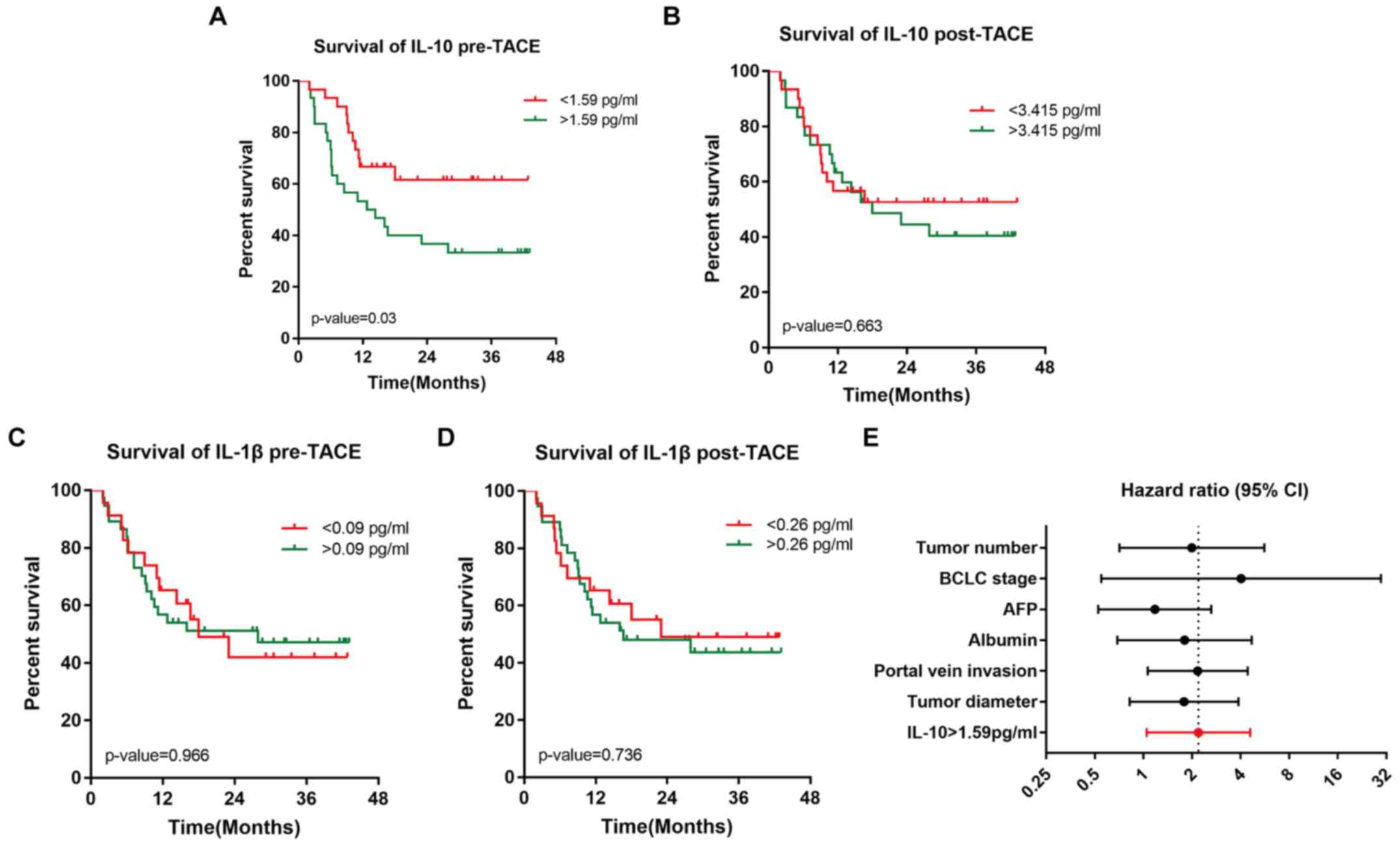|
1
|
Tang A, Hallouch O, Chernyak V, Kamaya A
and Sirlin CB: Epidemiology of hepatocellular carcinoma: Target
population for surveillance and diagnosis. Abdom Radiol (NY).
43:13–25. 2018. View Article : Google Scholar : PubMed/NCBI
|
|
2
|
Hoyos S, Escobar J, Cardona D, Guzmán C,
Mena Á, Osorio G, Pérez C, Restrepo JC and Correa G: Factors
associated with recurrence and survival in liver transplant
patients with HCC-a single center retrospective study. Ann Hepatol.
14:58–63. 2015. View Article : Google Scholar : PubMed/NCBI
|
|
3
|
Vitale A, Peck-Radosavljevic M, Giannini
EG, Vibert E, Sieghart W, Van Poucke S and Pawlik TM: Personalized
treatment of patients with very early hepatocellular carcinoma. J
Hepatol. 66:412–423. 2017. View Article : Google Scholar : PubMed/NCBI
|
|
4
|
Patel T: Increasing incidence and
mortality of primary intrahepatic cholangiocarcinoma in the United
States. Hepatology. 33:1353–1357. 2001. View Article : Google Scholar : PubMed/NCBI
|
|
5
|
Sacco R, Tapete G, Simonetti N, Sellitri
R, Natali V, Melissari S, Cabibbo G, Biscaglia L, Bresci G and
Giacomelli L: Transarterial chemoembolization for the treatment of
hepatocellular carcinoma: A review. J Hepatocell Carcinoma.
4:105–110. 2007. View Article : Google Scholar
|
|
6
|
Han K and Kim JH: Transarterial
chemoembolization in hepatocellular carcinoma treatment: Barcelona
clinic liver cancer staging system. World J Gastroenterol.
21:10327–10335. 2015. View Article : Google Scholar : PubMed/NCBI
|
|
7
|
Raoul JL, Forner A, Bolondi L, Cheung TT,
Kloeckner R and de Baere T: Updated use of TACE for hepatocellular
carcinoma treatment: How and when to use it based on clinical
evidence. Cancer Treat Rev. 72:28–36. 2019. View Article : Google Scholar : PubMed/NCBI
|
|
8
|
Opal SM and DePalo VA: Anti-inflammatory
cytokines. Chest. 117:1162–1172. 2000. View Article : Google Scholar : PubMed/NCBI
|
|
9
|
Ramaswamy P, Goswami K, Dalavaikodihalli
Nanjaiah N, Srinivas D and Prasad C: TNF-α mediated MEK-ERK
signaling in invasion with putative network involving NF-κB and
STAT-6: A new perspective in glioma. Cell Biol Int. 43:1257–1266.
2019. View Article : Google Scholar : PubMed/NCBI
|
|
10
|
Quail DF, Olson OC, Bhardwaj P, Walsh LA,
Akkari L, Quick ML, Chen IC, Wendel N, Ben-Chetrit N, Walker J, et
al: Obesity alters the lung myeloid cell landscape to enhance
breast cancer metastasis through IL5 and GM-CSF. Nat Cell Biol.
19:974–987. 2017. View
Article : Google Scholar : PubMed/NCBI
|
|
11
|
Shih CM, Lee YL, Chiou HL, Hsu WF, Chen
WE, Chou MC and Lin LY: The involvement of genetic polymorphism of
IL-10 promoter in non-small cell lung cancer. Lung Cancer.
50:291–297. 2005. View Article : Google Scholar : PubMed/NCBI
|
|
12
|
Lech-Maranda E, Baseggio L, Bienvenu J,
Charlot C, Berger F, Rigal D, Warzocha K, Coiffier B and Salles G:
Interleukin-10 gene promoter polymorphisms influence the clinical
outcome of diffuse large B-cell lymphoma. Blood. 103:3529–3534.
2004. View Article : Google Scholar : PubMed/NCBI
|
|
13
|
Cao HY, Zou P and Zhou H: Genetic
association of interleukin-10 promoter polymorphisms and
susceptibility to diffuse large B-cell lymphoma: A meta-analysis.
Gene. 519:288–294. 2013. View Article : Google Scholar : PubMed/NCBI
|
|
14
|
Matsumoto K, Oki A, Satoh T, Okada S,
Minaguchi T, Onuki M, Ochi H, Nakao S, Sakurai M, Abe A, et al:
Interleukin-10 −1082 gene polymorphism and susceptibility to
cervical cancer among Japanese women. Jpn J Clin Oncol.
40:1113–1116. 2010. View Article : Google Scholar : PubMed/NCBI
|
|
15
|
Vairaktaris E, Yapijakis C, Serefoglou Z,
Derka S, Vassiliou S, Nkenke E, Vylliotis A, Spyridonidou S, Neukam
FW, Schlegel KA and Patsouris E: The interleukin-10 (−1082A/G)
polymorphism is strongly associated with increased risk for oral
squamous cell carcinoma. Anticancer Res. 28:309–314.
2008.PubMed/NCBI
|
|
16
|
Zhang J, Zhang Q, Lou Y, Fu Q, Chen Q, Wei
T, Yang J, Tang J, Wang J, Chen Y, et al: Hypoxia-inducible
factor-1α/interleukin-1β signaling enhances hepatoma
epithelial-mesenchymal transition through macrophages in a
hypoxic-inflammatory microenvironment. Hepatology. 67:1872–1889.
2018. View Article : Google Scholar : PubMed/NCBI
|
|
17
|
Mohs A, Kuttkat N, Reissing J, Zimmermann
HW, Sonntag R, Proudfoot A, Youssef SA, de Bruin A, Cubero FJ and
Trautwein C: Functional role of CCL5/RANTES for HCC progression
during chronic liver disease. J Hepatol. 66:743–753. 2017.
View Article : Google Scholar : PubMed/NCBI
|
|
18
|
Kim MJ, Jang JW, Oh BS, Kwon JH, Chung KW,
Jung HS, Jekarl DW and Lee S: Change in inflammatory cytokine
profiles after transarterial chemotherapy in patients with
hepatocellular carcinoma. Cytokine. 64:516–522. 2013. View Article : Google Scholar : PubMed/NCBI
|
|
19
|
Loosen SH, Schulze-Hagen M, Leyh C, Benz
F, Vucur M, Kuhl C, Trautwein C, Tacke F, Bruners P, Roderburg C
and Luedde T: IL-6 and IL-8 serum levels predict tumor response and
overall survival after TACE for primary and secondary hepatic
malignancies. Int J Mol Sci. 19:E17662018. View Article : Google Scholar : PubMed/NCBI
|
|
20
|
Almeida BR, Barros BCSC, Araújo ACL,
Alcantara C and Suzuki E: Paracoccidioides species present distinct
fungal adherence to epithelial lung cells and promote different
IL-8 secretion levels. Med Microbiol Immunol; 2019, View Article : Google Scholar
|
|
21
|
Markov N and Simon HU: IL-37: A new player
in the chronic rhinosinusitis arena. J Allergy Clin Immunol. Oct
28–2019.(Epub ahead of print). View Article : Google Scholar : PubMed/NCBI
|
|
22
|
Moaaz M, Youssry S, Elfatatry A and El
Rahman MA: Th17/Treg cells imbalance and their related cytokines
(IL-17, IL-10 and TGF-β) in children with autism spectrum disorder.
J Neuroimmunol. 337:5770712019. View Article : Google Scholar : PubMed/NCBI
|
|
23
|
Zhou L, Wang LY, Zhang XM, Zeng NL, Chen
TW, Li R, Huang YC and Tang YL: Semi-quantitative assessment of the
presence and Child-Pugh class of hepatitis B related cirrhosis by
using liver lobe-based dynamic contrast-enhanced MRI. Clin Radiol.
71:1289–1295. 2016. View Article : Google Scholar : PubMed/NCBI
|
|
24
|
Sato Y, Watanabe H, Sone M, Onaya H,
Sakamoto N, Osuga K, Takahashi M and Arai Y; Japan Interventional
Radiology in Oncology Study Group-JIVROSG, : Tumor response
evaluation criteria for HCC (hepatocellular carcinoma) treated
using TACE (transcatheter arterial chemoembolization): RECIST
(response evaluation criteria in solid tumors) version 1.1 and
mRECIST (modified RECIST): JIVROSG-0602. Ups J Med Sci. 118:16–22.
2013. View Article : Google Scholar : PubMed/NCBI
|
|
25
|
Jalal H, Pechlivanoglou P, Krijkamp E,
Alarid-Escudero F, Enns E and Hunink MG: An overview of R in health
decision sciences. Med Decis Making. 37:735–746. 2017. View Article : Google Scholar : PubMed/NCBI
|
|
26
|
Ernst J and Bar-Joseph Z: STEM: A tool for
the analysis of short time series gene expression data. BMC
Bioinformatics. 7:1912006. View Article : Google Scholar : PubMed/NCBI
|
|
27
|
Huang da W, Sherman BT and Lempicki RA:
Systematic and integrative analysis of large gene lists using DAVID
bioinformatics resources. Nat Protoc. 4:44–57. 2009. View Article : Google Scholar : PubMed/NCBI
|
|
28
|
Kanehisa M, Furumichi M, Tanabe M, Sato Y
and Morishima K: KEGG: New perspectives on genomes, pathways,
diseases and drugs. Nucleic Acids Res. 45:D353–D361. 2017.
View Article : Google Scholar : PubMed/NCBI
|
|
29
|
von Mering C, Huynen M, Jaeggi D, Schmidt
S, Bork P and Snel B: STRING: A database of predicted functional
associations between proteins. Nucleic Acids Res. 31:258–261. 2003.
View Article : Google Scholar : PubMed/NCBI
|
|
30
|
Dolcino M, Tinazzi E, Puccetti A and
Lunardi C: In systemic sclerosis, a unique long non coding RNA
regulates genes and pathways involved in the three main features of
the disease (vasculopathy, fibrosis and autoimmunity) and in
carcinogenesis. J Clin Med. 8:2019. View Article : Google Scholar
|
|
31
|
Silva JP, Berger NG, Tsai S, Christians
KK, Clarke CN, Mogal H, White S, Rilling W and Gamblin TC:
Transarterial chemoembolization in hepatocellular carcinoma with
portal vein tumor thrombosis: A systematic review and
meta-analysis. HPB (Oxford). 19:659–666. 2017. View Article : Google Scholar : PubMed/NCBI
|
|
32
|
Borromeo MD, Savage TK, Kollipara RK, He
M, Augustyn A, Osborne JK, Girard L, Minna JD, Gazdar AF, Cobb MH
and Johnson JE: ASCL1 and NEUROD1 reveal heterogeneity in pulmonary
neuroendocrine tumors and regulate distinct genetic programs. Cell
Rep. 16:1259–1272. 2016. View Article : Google Scholar : PubMed/NCBI
|
|
33
|
Tang W, Lv B, Yang B, Chen Y, Yuan F, Ma
L, Chen S, Zhang S and Xia J: TREM2 acts as a tumor suppressor in
hepatocellular carcinoma by targeting the PI3K/Akt/β-catenin
pathway. Oncogenesis. 8:92019. View Article : Google Scholar : PubMed/NCBI
|
|
34
|
Pinto R, Assis J, Nogueira A, Pereira C,
Coelho S, Brandão M, Dias J, Alves S, Pereira D and Medeiros R:
Pharmacogenomics in epithelial ovarian cancer first-line treatment
outcome: Validation of GWAS-associated NRG3 rs1649942 and BRE
rs7572644 variants in an independent cohort. Pharmacogenomics J.
19:25–32. 2019. View Article : Google Scholar : PubMed/NCBI
|
|
35
|
Al-Nashmi M, Taha S, Alsharoqi I and
Bakhiet M: Interleukin 1 receptor antagonist and
2′-5′-oligoadenylate synthetase-like molecules as novel biomarkers
for multiple sclerosis patients in Bahrain. Mult Scler Relat
Disord. 18:1–7. 2017. View Article : Google Scholar : PubMed/NCBI
|
|
36
|
Gu Z, Li Y, Yang X, Yu M, Chen Z, Zhao C,
Chen L and Wang L: Overexpression of CLC-3 is regulated by XRCC5
and is a poor prognostic biomarker for gastric cancer. J Hematol
Oncol. 11:1152018. View Article : Google Scholar : PubMed/NCBI
|
|
37
|
Yang H, Ma L, Wang Y, Zuo W, Li B, Yang Y,
Chen Y, Chen L, Wang L and Zhu L: Activation of ClC-3 chloride
channel by 17β-estradiol relies on the estrogen receptor α
expression in breast cancer. J Cell Physiol. 233:1071–1081. 2018.
View Article : Google Scholar : PubMed/NCBI
|
|
38
|
Chan TC, Li CF, Ke HL, Wei YC, Shiue YL,
Li CC, Yeh HC, Lee HY, Huang SK, Wu WJ and Li WM: High TNFAIP6
level is associated with poor prognosis of urothelial carcinomas.
Urol Oncol. 37:293.e11–293.e24. 2019. View Article : Google Scholar
|
|
39
|
Pencik J, Pham HT, Schmoellerl J, Javaheri
T, Schlederer M, Culig Z, Merkel O, Moriggl R, Grebien F and Kenner
L: JAK-STAT signaling in cancer: From cytokines to non-coding
genome. Cytokine. 87:26–36. 2016. View Article : Google Scholar : PubMed/NCBI
|
|
40
|
Wubetu GY, Utsunomiya T, Ishikawa D,
Yamada S, Ikemoto T, Morine Y, Iwahashi S, Saito Y, Arakawa Y,
Imura S, et al: High STAT4 expression is a better prognostic
indicator in patients with hepatocellular carcinoma after
hepatectomy. Ann Surg Oncol. 21 (Suppl 4):S721–S728. 2014.
View Article : Google Scholar : PubMed/NCBI
|
|
41
|
Cui MX, Jiang JF, Min GN, Han W and Wu YJ:
Ciliary neurotrophic factor analogue aggravates
CCl4-induced acute hepatic injury in rats. Can J Physiol
Pharmacol. 95:620–623. 2017. View Article : Google Scholar : PubMed/NCBI
|
|
42
|
Hayashi T, Yamashita T, Terashima T, Suda
T, Okada H, Asahina Y, Hayashi T, Hara Y, Nio K, Sunagozaka H, et
al: Serum cytokine profiles predict survival benefits in patients
with advanced hepatocellular carcinoma treated with sorafenib: A
retrospective cohort study. BMC Cancer. 17:8702017. View Article : Google Scholar : PubMed/NCBI
|
|
43
|
González-Arriagada WA, Lozano-Burgos C,
Zúñiga-Moreta R, González-Díaz P and Coletta RD:
Clinicopathological significance of chemokine receptor (CCR1, CCR3,
CCR4, CCR5, CCR7 and CXCR4) expression in head and neck squamous
cell carcinomas. J Oral Pathol Med. 47:755–763. 2018. View Article : Google Scholar : PubMed/NCBI
|
|
44
|
Huang Q, Ma XC, Yang X, Wang W, Li Y, Lv
Z, Corrigan CJ, Chen Y and Ying S: Expression of IL-17A, E, and F
and their receptors in non-small-cell lung cancer. J Biol Regul
Homeost Agents. 32:1105–1116. 2018.PubMed/NCBI
|
|
45
|
Tulotta C, Lefley DV, Freeman K, Gregory
WM, Hanby AM, Heath PR, Nutter F, Wilkinson JM, Spicer-Hadlington
AR, Liu X, et al: Endogenous production of IL1B by breast cancer
cells drives metastasis and colonization of the bone
microenvironment. Clin Cancer Res. 25:2769–2782. 2019. View Article : Google Scholar : PubMed/NCBI
|
|
46
|
Bornstein S, Schmidt M, Choonoo G, Levin
T, Gray J, Thomas CR Jr, Wong M and McWeeney S: IL-10 and integrin
signaling pathways are associated with head and neck cancer
progression. BMC Genomics. 17:382016. View Article : Google Scholar : PubMed/NCBI
|
|
47
|
Chen K, Liu Q, Tsang LL, Ye Q, Chan HC,
Sun Y and Jiang X: Human MSCs promotes colorectal cancer
epithelial-mesenchymal transition and progression via
CCL5/β-catenin/Slug pathway. Cell Death Dis. 8:e28192017.
View Article : Google Scholar : PubMed/NCBI
|
|
48
|
Zhang Q, Bai X, Chen W, Ma T, Hu Q, Liang
C, Xie S, Chen C, Hu L, Xu S and Liang T: Wnt/β-catenin signaling
enhances hypoxia-induced epithelial-mesenchymal transition in
hepatocellular carcinoma via crosstalk with hif-1α signaling.
Carcinogenesis. 34:962–973. 2013. View Article : Google Scholar : PubMed/NCBI
|
|
49
|
Chen W, Ma T, Shen XN, Xia XF, Xu GD, Bai
XL and Liang TB: Macrophage-induced tumor angiogenesis is regulated
by the TSC2-mTOR pathway. Cancer Res. 72:1363–1372. 2012.
View Article : Google Scholar : PubMed/NCBI
|
|
50
|
Hu X, Zhao Y, He X, Li J, Wang T, Zhou W,
Wan D, Wang H and Gu J: Ciliary neurotrophic factor receptor alpha
subunit-modulated multiple downstream signaling pathways in hepatic
cancer cell lines and their biological implications. Hepatology.
47:1298–1308. 2008. View Article : Google Scholar : PubMed/NCBI
|
|
51
|
Mumm JB, Emmerich J, Zhang X, Chan I, Wu
L, Mauze S, Blaisdell S, Basham B, Dai J, Grein J, et al: IL-10
elicits IFNγ-dependent tumor immune surveillance. Cancer Cell.
20:781–796. 2011. View Article : Google Scholar : PubMed/NCBI
|
|
52
|
Wang S, Gao X, Shen G, Wang W, Li J, Zhao
J, Wei YQ and Edwards CK: Interleukin-10 deficiency impairs
regulatory T cell-derived neuropilin-1 functions and promotes Th1
and Th17 immunity. Sci Rep. 6:242492016. View Article : Google Scholar : PubMed/NCBI
|
|
53
|
Huber S, Gagliani N, Esplugues E, O'Connor
W Jr, Huber FJ, Chaudhry A, Kamanaka M, Kobayashi Y, Booth CJ,
Rudensky AY, et al: Th17 cells express interleukin-10 receptor and
are controlled by Foxp3− and Foxp3+ regulatory CD4+ T
cells in an interleukin-10-dependent manner. Immunity. 34:554–565.
2011. View Article : Google Scholar : PubMed/NCBI
|
|
54
|
Dennis KL, Blatner NR, Gounari F and
Khazaie K: Current status of interleukin-10 and regulatory T-cells
in cancer. Curr Opin Oncol. 25:637–645. 2013. View Article : Google Scholar : PubMed/NCBI
|
|
55
|
Ahmad N, Ammar A, Storr SJ, Green AR,
Rakha E, Ellis IO and Martin SG: IL-6 and IL-10 are associated with
good prognosis in early stage invasive breast cancer patients.
Cancer Immunol Immunother. 67:537–549. 2018. View Article : Google Scholar : PubMed/NCBI
|
|
56
|
El-Emshaty HM, Nasif WA and Mohamed IE:
Serum cytokine of IL-10 and IL-12 in chronic liver disease: The
immune and inflammatory response. Dis Markers. 2015:7072542015.
View Article : Google Scholar : PubMed/NCBI
|















